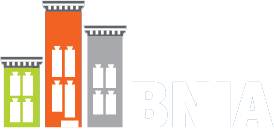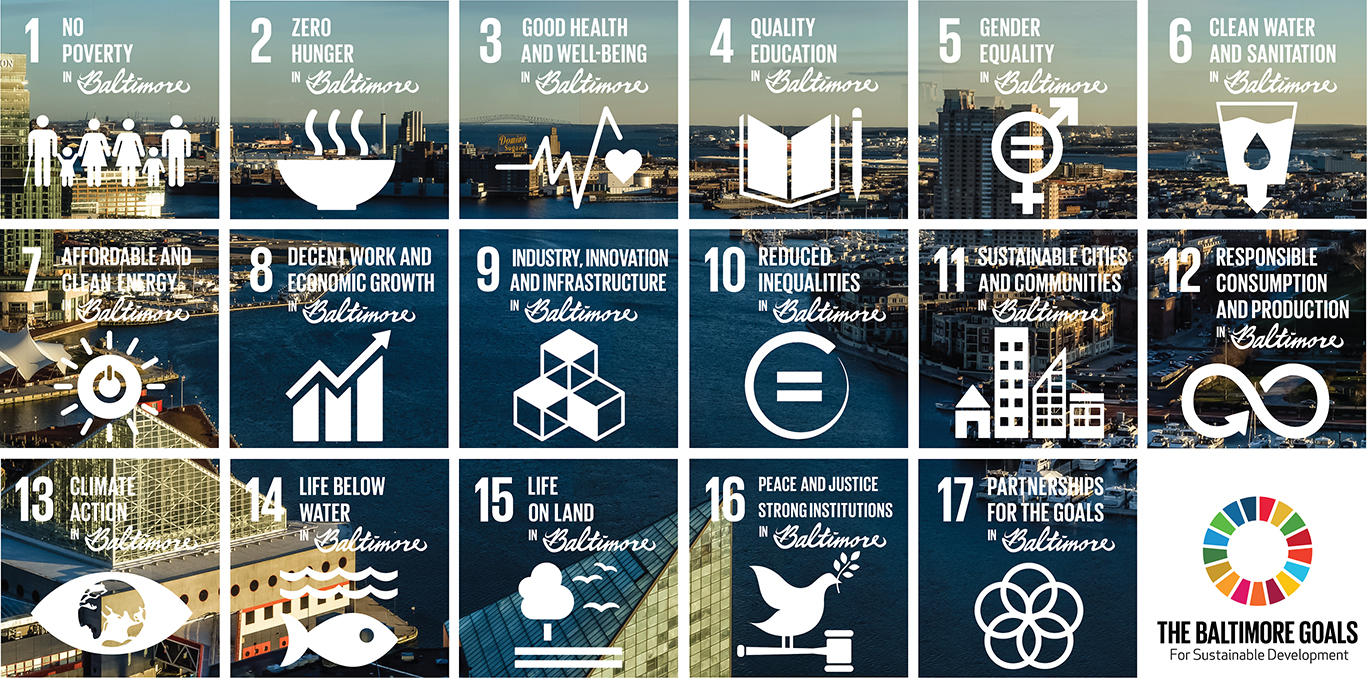For the last year, I have been working at BNIA-JFI on an effort to localize the UN’s newly-adopted 2030 Sustainable Development Goals to the Baltimore context. The SDGs comprise of seventeen global goals that measure progress towards sustainable economic, social, and environmental development. We have worked to develop the infrastructure for engaging multi-sector stakeholders to provide substantive input into the establishment of 52 indicators. We have convened stakeholder workgroup meetings and community meetings to solicit feedback on several drafts of indicator lists, and also on the process we were using to develop the indicators. The current list of indicators that measure Baltimore’s progress towards these goals is available here.
I was personally excited to work on this project after my background in working to support food security, which is encompassed in Goal #2 (End Hunger, Achieve Food Security and Improved Nutrition, and Promote Sustainable Agriculture). Working at the Baltimore Partnership to End Childhood Hunger, it was quite clear that no effort to combat food insecurity would be sufficient that did not hold a systemic view of factors that put children at risk, and a commitment to collaborate with groups that specialized in addressing these. Equally important were the relationships we built with community leaders whose expertise was crucial for ensuring that our interventions were effective and helpful. The 2030 SDGs emphasize the importance of both a systemic focus and local engagement, making this work a natural next step for me.
On November 24-25, I was invited to attend the Bonn Symposium in Bonn, Germany to present on the Baltimore SDG process, and to learn from the experiences of people in Europe and the world about how they are bringing the SDGs to life. This year’s theme for the Symposium was “Leave No One Behind,” exploring the role, agency, and scope of responsibility of local jurisdictions to implement the SDGs inclusively and effectively. Topics ranged from general discussions of common strategic concerns, such as local conflicts of interest, to discussions based on the implementation of specific goals. I presented our work in Baltimore as part of a round table discussion on strategies to build strong networks between government and civil society that address systemic social inequalities. In particular, our work here at BNIA and our focus on developing indicators as our primary method of localizing the goals was of interest to the audience.
A few takeaway points:
- To bring these 17 Global Goals to life locally, it is important that the local government commits to regularly engaging with residents. As we make changes in policy, community involvement will ensure that the initiative is supported by residents and is responsive to residents’ diverse needs and to changing conditions.
- Organizations like BNIA, which publish community-based indicators, are a unique resource among global cities. Accessing data that is consistently broken down by the same neighborhoods is key to tackling the 17 SDGs collaboratively. BNIA is the Baltimore partner in the National Neighborhood Indicators Partnership (NNIP), which is a network of data intermediaries in US cities to empower local stakeholders to access reliable and actionable data. You can find their recently-released guide to starting a local site here.
How you can get involved with the Sustainable Development Goals:
Let us know what you think about the Baltimore 2030 SDG Indicators
Check out the most recent draft of our report
Participate in the Baltimore Office of Sustainability’s Every Story Counts Campaign to let us know what you’re doing to make your community stronger.
Alison Howland
Research Assistant
Baltimore Neighborhood Indicators Alliance—Jacob France Institute



